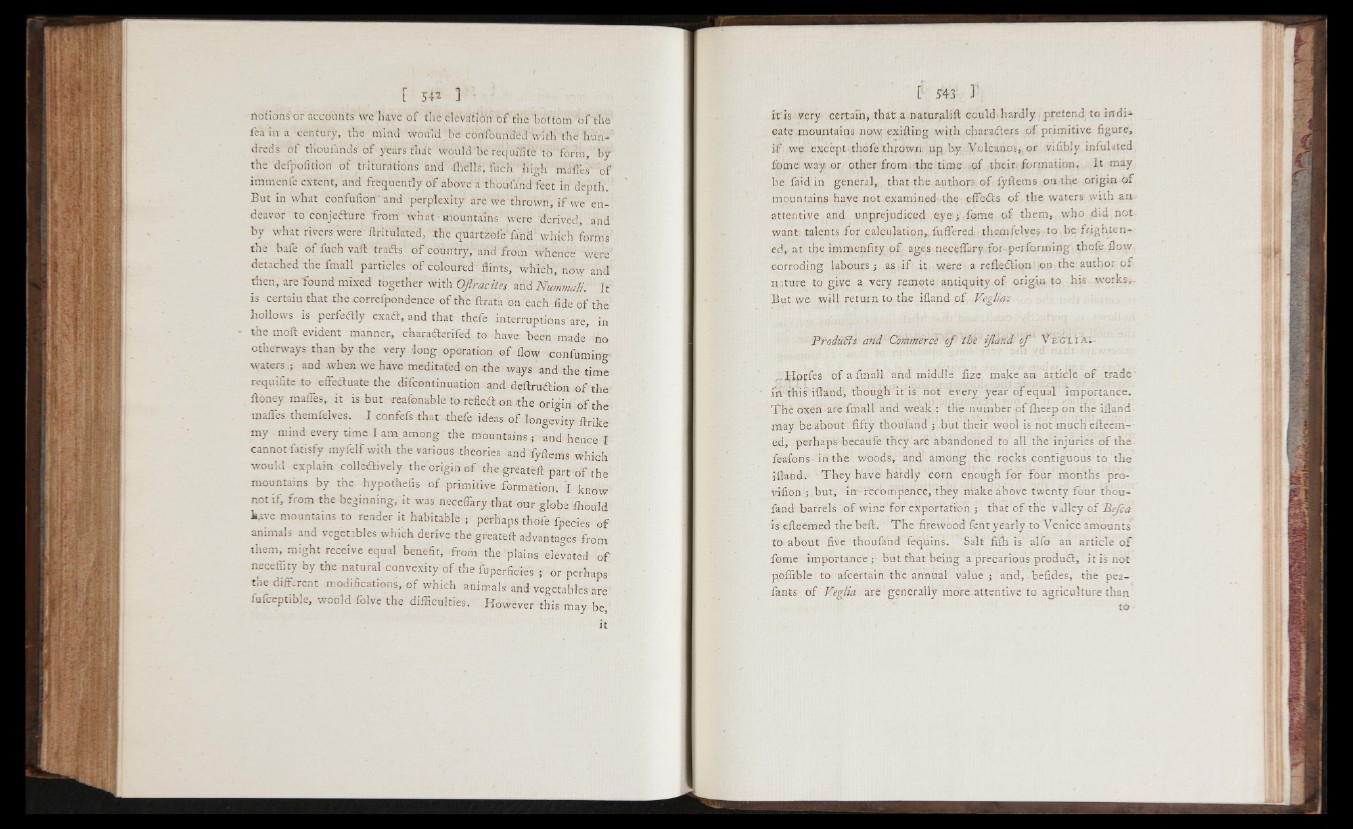
f 54* ]
notions'or accounts we have o f the clevatihn o f the'bottom o f the
lea m a century, the mind would be confounded with the hundreds
o f tliouiands o f years that would berequi'fite to form, by
the deipofition of triturations and llie'lls, fuch high ma(les‘ of
immenle extent, and frequently o f above a thouiand feet in depth.
But in what confufion'and perplexity are we thrown, i f we endeavor
to conjeiture from what mountains were derived, and
by what rivers were ftritulated, :the quartzofe'fand which forms
the bafe o f fuch vaft trails o f country, and from whence were'
detached the fmall particles o f coloured flints, which, now and
then, are found mixed together with Oftracites and Nummali. It
is certaiu that the correfpondence o f the ftrata on each fide o f the
hollows is perfetfly exaft, and that thefe interruptions'are, in
the moll evident manner-, charadterifed to have been made no
otherways than by the very long operation o f flow confirming"
wa t e r s and when we have meditated on the ways and the time
requifite to effectuate the difcontinuation and deftrutftion o f the
ftoney maffes, it is but ceafonable to refleil on the origin o f the
maffes themfelves. I confefs that thefe ideas o f longevity ffrike
my mind every time I am among the mountains; and hence I
cannot fatisfy myfelf with the various theories and fyftems which
would explain colle&ively the origin o f the greateft part o f the
mountains by the hypothefis of primitive formation. I know
not if, from the beginning, it was neceffary that our globe ffiould
have mountains to render it habitable ; perhaps thofe fpecies o f
animals and vegetables which derive the greateft advantages from
them, might receive equal benefit, from the plains elevated o f
neceffity by the natural convexity o f the fuperficies ; or perhaps
the different modifications, of which animals and vegetables are
fufceptible, would folve the difficulties. However this may be,
it
P 54-3 ' 3'
it is very certain, that a naturalift could.hardly pretend to indicate
mountains now exifting with characters o f primitive figure,
if we except thofe thrown up b.y Volcanos, or vifibly infulated
fome way or other from, the time of their, formation. It may
be faid in general, that the authors o f iyitems on the origin of
mountains have not examined the effects o f the waters with ail
attentive and unprejudiced e y e ; fome o f them, who did not
want talents for calculation,, fuffered themfelves to be frightened,
at the immenfity o f ages neceffary for performing thofe flow
corroding labours ; as i f it were a reflection on the author o f
nature to give a very remote antiquity o f origin to his works*.
But we will return to the iiland o f Vegliai
Produffs and Commerci o f the i f and- o f V e gT I A.
„Iffprfes o f afmall and middle fize make an article o f trade'
in this iiland, though it is riot every year o f equal importance.
Thè oxen are fmall and weak : the number óf flieep on the iiland
may be about fifty thoufand ; but their wool is not muchefteem-
ed, perhaps becaufe they are abandoned to all the injuries o f the
feafons in the woods, and among the rocks contiguous to the
iiland. They have hardly corn enough for four months pro-
vifion ;,but, in recompence, they make above twenty four thoufand
barrels o f wine for exportation ; that o f the valley o f Befca
is efteemed the beft. The firewood font yearly to Venice amounts
to about five thoufand fequins. Salt fiih is alfo an article o f
fome importance; but that being a precarious product, it is not
poffible to afcertain the annual value ; and, befides, the pea--
fants of Veglia, are generally moreat ten five to agriculture than
to